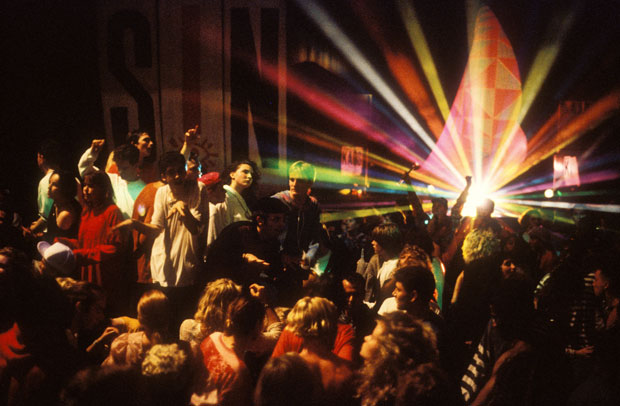Around 15 years ago when I worked on Tottenham Court Road, I’d occasionally walk past the Astoria to see hundreds of young teens, dressed identically and queuing to see a band I’d never heard of. They invariably wore hoodies, had longish hair with side-swept fringes and black make-up – eyeliner, chipped nail varnish, even lipstick – but they also shared a body language that exaggerated the sullen self-pity of any teenager. These were emos, fans of a certain type of music that straddled punk, goth and metal and invariably focussed on melodramatic inner angst. They were arguably the last youth tribe.
‘Emo might have been the last subculture,’ says Jamie Brett, a former emo himself who now works for Youth Club Archive, an organisation that collects images of the numerous youth subcultures that broke out in the UK between the 1950s and 2010. The organisation has recently received an HLF grant which it will use to catalogue and research the images in its collection, as well as to host monthly events. The long-term aim is to open a physical museum dedicated to youth culture, using photographs and ephemera from the numerous scenes from Teds to emos.

Ravers on the dancefloor at The Trip at Astoria, London (1988), David Swindells. Image courtesy Youth Club Archive
The archive began with Sleazenation magazine, which documented youth and club culture in the 1990s. Over time, it developed a photographic archive of different scenes that continued as the Photographic Youth Music & Culture Archive after Sleazenation closed in 2003. ‘Until a couple of years ago we were just an image library but there was an underlying importance to what we did – selling image rights was just how we kept going,’ says Brett. ‘We then had a conversation about what we were doing and as a result Youth Club was formed – a non-profit organisation with a plan to share youth culture history through photography or other means.’
Youth Club Archive includes images of club culture, skinheads, punks, goths, mods and political activists, demonstrating the scale of British youth culture but also collecting all the different strands in a single place. ‘The HLF grant is paying for a metadata renovation, which basically allows us to bring our archive into a fully catalogued state,’ says Brett. ‘If we tried to start a museum now we couldn’t as it’s not been researched and isn’t complete. We are starting with around 12,000 images of punks, skinheads, ravers, ‘80s club culture and activists, working with photographers and researchers who can identify locations and era.’
‘This is the first step towards opening a museum, the next stage will be getting more images – we have around 70,000. The plan is to eventually have a space somewhere in London that isn’t just photography, it’s also ephemera, which we are starting to gather. We see the Photographers’ Gallery as a sort of role model in the way they have grown up.’
The important social history captured in images of youth culture is now widely appreciated, as is the fact these movements were often colourful or distinctive. It’s fascinating also to see nostalgia at work, and how perceptions have changed of previously despised, feared or mocked groups. Those tree-climbing, bypass-hating idealistic crusties of the ‘90s – maybe they had a point?

Crowd of early UK hip hop fans at Camden Town Hall, London (1986), Normski. Image courtesy Youth Club Archive
So where have all the tribes gone? While old scenes – goth, mod, skinheads – still survive, there have been no unique youth tribes since emo and Nu Rave in the mid 2000s. There’s a sense that this ties in with the rise of the internet, with a more interconnected society removing that need for intensely localised scenes, which often coalesced around a single record or clothes shop or a particular club or band. The wide availability of music allows young people to explore sounds across genres and timeframes, which could also disrupt that need for a tribal identity – and music is central to the tribes covered by Youth Club.
‘There are still elements of copying each other, especially things like make-up, which is massive with teenagers, but there aren’t those identifiable tribe aesthetics that you got from face-to-face contact,’ says Brett. ‘They say club culture has gone underground again because it is so expensive for young people to go out and so many clubs are being closed, so house parties are what’s happening. Maybe now they are taking things into their own hands something will emerge. We are also experiencing a demand for the tangible in the form of vinyl and I wonder if that will create more movements.’ Until then, we are left only with our past.
Visit Youth Club’s website for more information about the archive.















![Masterpiece [Re]discovery 2022. Photo: Ben Fisher Photography, courtesy of Masterpiece London](http://zephr.apollo-magazine.com/wp-content/uploads/2022/07/MPL2022_4263.jpg)
‘Like landscape, his objects seem to breathe’: Gordon Baldwin (1932–2025)